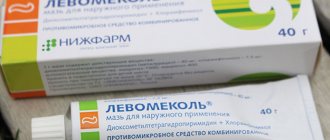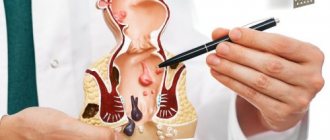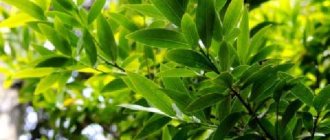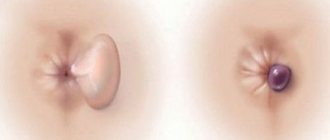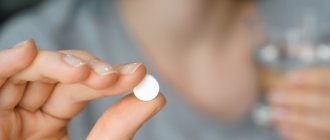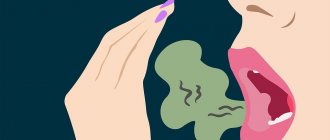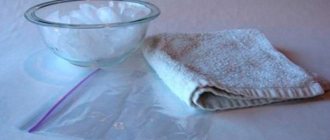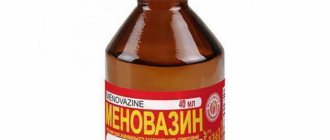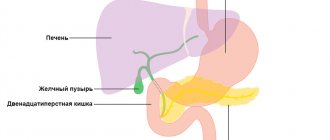Inflamed and enlarged venous nodes of the rectal plexus, their prolapse, as well as associated bleeding, are observed in 15% of the world's population.
Numerous methods of treating hemorrhoids, both conservative and surgical, allow you to completely get rid of this delicate problem. An important role is played by folk remedies, which can be part of complex therapy or used independently.
Knotweed for hemorrhoids is one of the most effective and popular remedies for strengthening the walls of blood vessels, stopping bleeding and eliminating constipation. In addition, the plant contains numerous components that have a positive effect on the general condition of the body.
General information
Knotweed (also called kidney grass, hemorrhoid grass, bitterweed, flea grass) is a member of the buckwheat family. It reaches a height of up to one meter. The leaves are entire, lancelet-shaped with a reddish spot in the middle, which disappears during drying. Small pink or white flowers are collected in inflorescences. The fruit has the shape of a black shiny nut about 2 mm in size.
Knotweed can be found on pharmacy shelves in the form of a tincture or as crushed plant material used in the preparation of decoctions or tinctures. It is used for local exposure and internal use.
This is a fairly common plant that you can collect yourself. The habitat of the grass is quite extensive - low-lying meadows, banks of reservoirs, silt deposits in river valleys, damp forest paths, temporarily moist areas.
If desired, it is possible to grow it independently, by sowing fruits - nuts - directly into the ground in late winter.
The above-ground part of the grass is collected during the flowering period (June-October). Shoots approximately 40 cm long are cut. Next, they are cleaned of dirt and damaged parts and dried in a ventilated area. Stored in paper bags or plywood boxes for no more than 2 years.
Properly prepared raw materials have a bitter taste and are odorless.
If the plant acquires an odor or becomes too dark in color, it means that the drying or storage conditions have been violated and should not be consumed.
Do not forget that it is better to entrust the collection of herbs to an experienced herbalist or buy at a pharmacy.
Knotweed is used as a raw material for medicines
Description
Knotweed is an annual plant. The height of the plant stem can reach a meter level. The leaves of the kidney grass are lanceolate. They have red spots. The flowers have a pinkish or whitish tint. The seeds are glossy oval nuts. It spreads by throwing seeds into the soil.
The knotweed grows in Europe and Asia. In Russia, the plant is common near water bodies. The highlander is moisture-loving. Growing in cultivated areas, it is considered a weed. Many gardeners have ideas about the healing properties of the plant. It is thrown away along with other harmful plants.
Compound
The positive effect in the treatment of hemorrhoids with knotweed is achieved thanks to the following contained in it:
- Vitamin C, which has a beneficial effect on blood vessels, reduces their permeability and fragility. Fights inflammatory processes in hemorrhoids. Eliminates bleeding. Has an antioxidant effect. Increases the body's protective functions.
- Vitamin K, which shows its positive effects during bleeding. Helps stabilize blood viscosity. Participates in the production of platelets.
- Essential oils that have a mild laxative effect. This property of the plant is especially important for constipation in order to avoid injury to hemorrhoids.
- Flavonoids (avicularin, hyperoside, quercitrin, isoquercitrin), which strengthen the walls of blood vessels and increase their elasticity. Helps strengthen the immune system. They have anti-inflammatory, antioxidant, decongestant, wound-healing and bactericidal effects.
- Tannins, which dry wounds and speed up their healing. Prevents the destruction of damaged tissues.
- Organic acids (acetic, malic, etc.), which maintain the acid-base balance in the body at the proper level. They create ideal conditions for the development of healthy microflora in the intestines. Promotes its active work and regular emptying.
- Routine, which has anti-inflammatory, analgesic, sedative and antioxidant effects. Helps enhance the therapeutic effect of vitamin C. Reduces the risk of allergies to medications used in the treatment of hemorrhoids. Accelerates tissue restoration.
- Tannins, which relieve itching. They have anti-inflammatory, antimicrobial and healing effects. They exhibit tanning properties. Normalize blood clotting. Strengthens blood vessels. Stop bleeding.
- Pectins that improve blood circulation. Normalizes metabolic rate. Removes toxins and other harmful substances from the body. Normalize intestinal microflora.
- Macro- and microelements: nickel, selenium, vanadium, barium, aluminum, chromium, cobalt, zinc, copper, manganese, lead, boron, magnesium, potassium, iron, calcium.
Knotweed - a medicine gifted by nature
Pochechuy is a disease that has long been familiar to people, and even then folk healers knew the secrets of healing. Kidney herb for hemorrhoids was considered a unique and effective means of combating this unpleasant disease. Today, treatment with traditional methods has not lost its relevance in combination with other means and measures.
Kidney disease
The knotweed - what makes it unique
People around the world are familiar with this plant as a weed growing in gardens and home gardens, but not everyone knows about its miraculous healing properties. What kind of plant is this - knotweed, and how it is used in folk medicine, you will find out in the article.
What properties of knotweed are used in folk medicine?
Thanks to a number of components contained in this plant, it is known as a medicine for the treatment of both hemorrhoids and other diseases. The composition of the knotweed contains:
- Vitamins K and C. Vitamin K improves blood clotting and has an antihemorrhagic effect on the walls of blood vessels, i.e. strengthens and increases their elasticity, and also stimulates the removal of accumulated toxins from the body. Vitamin C is a powerful antioxidant that protects the body from viruses and bacteria, strengthens the immune system and provides an anti-inflammatory effect.
- Tannins are phenolic compounds characterized by tanning and astringent properties. They improve the body's absorption of ascorbic acid and prevent its elimination.
- Flavonoids are substances that give plants color. Proven vascular strengthening effect, anti-edematous effect, antiulcer, venotonic and antitumor properties, a strong antioxidant.
- Pectins – cleanse cells of toxins, activate hematopoietic processes, improve intestinal motility and normalize microflora, stimulate blood circulation.
This plant also contains essential oils, mucus and organic acids.
Where does the knotweed grow, how to collect and prepare it
Knotweed is a moisture-loving plant, so it is found on the banks of rivers, lakes, irrigation canals and other bodies of water. It grows throughout Russia, with the exception of the northern strip, and is also found in other regions of Europe and Asia.
The grass is collected during the flowering period. The upper parts of the plant are used as a healing drug. Dry the plant in a dry, ventilated area or using a special drying apparatus. Properly dried grass retains its natural color.
What diseases can be treated with knotweed
Due to the multiple healing properties of its components, knotweed is used to treat:
- hemorrhoids – internal, external, combined;
- internal hemorrhoidal bleeding - uterine, gastric, intestinal;
- periodontal disease and other oral diseases;
- skin diseases;
- wounds, burns, tumors;
- acute heart failure;
- constipation and kidney disease.
Knotweed is a pain reliever with a diuretic and laxative effect.
Contraindications for use
Just like other medicines, knotweed has a number of contraindications for use. This:
- Thrombosed hemorrhoids.
- Pregnancy and lactation period.
- Tendency to thrombosis.
- Acute renal and liver failure.
These contraindications apply to the internal use of decoctions and tinctures of the product.
Properties
Knotweed has all the properties necessary for the treatment of hemorrhoids:
- normalizes the functioning of the gastrointestinal tract and eliminates difficulties in normal bowel movements;
- reduces or completely eliminates bleeding from the anus. Stabilizes blood viscosity;
- strengthens the walls of blood vessels, reduces their permeability and gives elasticity;
- prevents inflammatory processes;
- eliminates burning sensation, itching and swelling;
- promotes wound healing;
- has antioxidant and bactericidal effects;
- strengthens the body's defenses.
We must not forget that any remedies, including folk remedies, should be used only after consultation with a proctologist.
Recipes for hemorrhoids have been used for a long time and have not lost their relevance today.
In addition, the miracle remedy does an excellent job:
- with periodontal disease;
- stomatitis;
- dermatological, colds and venereal diseases;
- rheumatism and radiculitis;
- headaches;
- wounds and ulcers;
- urolithiasis;
- uterine bleeding, etc.
When preparing medicines from knotweed, it is necessary to observe the exact dosage of the components, since the plant is considered poisonous.
Application in medicine
Traditional medicine doctors recommend using Highlander products in combination with conventional treatment for hemorrhoids, the effectiveness of which has been proven in highly randomized studies. Monotherapy for hemorrhoids using only renal herb usually does not give a quick and significant effect.
The active components of the plant help normalize the functioning of the blood coagulation and anticoagulation system. It is believed that an increase in blood viscosity is one of the factors leading to the occurrence of hemorrhoids and the increase in their exacerbations. In addition, Highlander helps to narrow the lumen of blood vessels, in particular veins, which, due to the weak muscle layer, are subject to excessive expansion and deformation.
At the same time, you need to pay attention that Knotweed is a poisonous herb, so it is necessary to obtain specialist advice regarding the recipe for the preparation of dosage forms, as well as their dosage, duration and regimen for hemorrhoids.
Advice! Consultation with a competent specialist will help you achieve good results in the shortest possible time in the treatment of hemorrhoids with Highlander with minimal risks of unwanted reactions.
Tinctures
The components of any tincture are purified medical ethyl alcohol and a dried plant. Alcohol is an auxiliary element and promotes rapid penetration of medicinal substances into the blood and longer storage of the product. The main element is a plant drenched in alcohol.
One of the variants of knotweed tincture produced by the pharmacological industry
The shelf life of tinctures can reach up to 3 years, which significantly exceeds the shelf life of decoctions and infusions. As a rule, they should be kept in a dark container in a cool place.
Considering the possible side effects caused by knotweed, it is not recommended to make an alcohol tincture from the plant yourself.
It is better to resort to a pharmaceutical product, which is used orally before eating food, 40 drops 3 times a day. The course of treatment can last 7–30 days.
Due to the negative effects of alcohol on the body, alcohol tinctures are used with caution or are prohibited:
- for diseases of the cardiovascular system in the acute period;
- pathologies of the gastrointestinal tract;
- malfunction of the liver;
- some infectious diseases.
Before using alcohol tincture, it is necessary to consult a doctor and carefully study the instructions for use of the product.
Grass collection
It is advisable to collect the grass during the flowering period. This time is from July to September. A stem about 25 centimeters long is cut off from the knotweed. The preferred method of drying is placing in an electric oven. You can dry the plant yourself in a dark place with good ventilation.
The main criterion for assessing the correct harvesting of a plant is the color of the leaves. He shouldn't change. If they turn black, then the grass is not dried correctly. The shelf life is 2 years. Stored in paper boxes.
Infusions
Infusions have good effectiveness in the treatment of hemorrhoids, however, unlike alcohol tinctures, they are stored in a cool place for no more than two days.
To prepare the product, porcelain, glass or enamel dishes are used.
The raw material is fresh or dried herbs (stems, leaves, flowers), collected independently, as well as purchased at a pharmacy or market.
- Pour boiling water (0.5 l) over the knotweed (2 tablespoons). Leave for 8 hours. Drink 50 ml at regular intervals throughout the day. The preparation of a new product should be daily;
- pour boiling water (100 g) over the plant (1 tablespoon). Leave for 20–25 minutes. Strain. Use three times a day before meals;
- pour the crushed raw materials (2 tablespoons) with boiling water (0.5 l). Leave in a thermos for 2 hours. Next, strain. Take 1/3 cup in 30 minutes. before meals 4 times a day;
- Pour boiling water (0.5 l) over chopped knotweed (2 tablespoons), leave for 12 hours, strain. Use 3 tbsp daily. spoons on an empty stomach.
All infusion recipes have the same effects and can be used at the request of the patient.
Plant information
The knotweed is native to Eurasia. The mountaineer prefers damp areas and that is why it can be found near lakes, reservoirs, and river banks. Less commonly, kidney grass is found in fields, but it can easily be found on agricultural land, in gardens and vegetable gardens, where it is considered a weed and people regularly weed it.
Knotweed is a herb that has fairly long stems, which can reach about 100 centimeters in length. The leaves of the Highlander are elongated, oblong with a smooth surface, sometimes they are covered with red-purple spots of irregular shape. During the flowering period, the kidney grass produces arrow-shaped shoots, which subsequently bloom into pinkish-red inflorescences. After the Knotweed fades, dark brown, shiny capsules with seeds remain in place of the flowers. These fruits remain in the ground for the whole winter, and after overwintering, the seeds germinate again and produce a new harvest. The plant is easy to find on the nearest lawn or in the front garden near the house, however, very few people are aware of the properties of kidney grass and its effectiveness in treating hemorrhoids.
Knotweed in nature
Decoctions
In terms of their effect, decoctions of knotweed are not inferior to infusions; however, during preparation, the plant is subjected to a short heat treatment.
The place and shelf life of decoctions does not differ from infusions.
- Pour boiling water (0.5 l) over dry crushed herb (1 tablespoon) and keep on low heat for 15 minutes. Next, wrap it up. After 2 hours, strain and cool. Divide the broth into equal portions. Drink at regular intervals throughout the day;
- pour boiling water (1.5 cups) over the grass (2g), boil. Leave for 2 hours. Strain. Use ½ cup three times a day;
- Pour vegetable raw materials (2 tablespoons) with hot water (200 ml), keep in a water bath for 15 minutes, stir constantly. Cool 45 minutes. and strain. Dilute with boiled water to 200 ml. Take 1 tbsp warm decoction. spoon 3 times a day before meals.
Compresses
Compresses from knotweed help not only to treat chronic hemorrhoids, but can also eliminate the symptoms of the disease in the acute period.
The procedure promotes:
- relieving pain, swelling, itching and burning, inflammation;
- nutrition of damaged areas;
- tissue regeneration and, as a result, recovery.
To prepare a compress, you need to fold a piece of gauze several times, moisten it in an infusion or decoction and apply it to the sore spot. The exposure time can vary from several minutes to several hours at the request of the patient.
Compresses can be used in the form of poultices (warm) or lotions (cold).
Gadgets:
- cause spasm of blood vessels, which stops bleeding;
- freeze the nerve endings, resulting in the cessation of acute pain;
- get rid of dying tissue.
Contraindications to the use of ice compresses are:
- severe infectious diseases;
- inflammatory processes in the pelvis.
As it warms up, the lotions are replaced with new ones.
Poultices:
- help eliminate discomfort, itching and burning;
- reduce inflammatory processes,
- normalize blood circulation.
Do not use for bleeding.
If the poultice begins to cool, it should be changed to warm.
As compresses, you can use not only direct decoctions or infusions, but also the herbs that remain during the squeezing process.
Enemas and lotions from kidney herbs
An enema is also considered effective for hemorrhoids. It is very easy to prepare an infusion for an enema; all you need to do is take a small amount of the dried plant and brew it with boiling water. After cooling the resulting infusion to an acceptable temperature, you can do an enema.
To make the procedure more effective, you need to add sea salt to the infusion; you can even use regular table salt. It is strictly forbidden to do such enemas too often, as this can disrupt the intestinal microflora.
During exacerbations, the patient begins to develop hemorrhoids. Knotweed can be used as a lotion. The infusion for lotions is prepared in the same way as for an enema, but it must be used differently. Moisten a cotton swab in the resulting infusion and apply to the inflamed area. In this case, not only the resulting water will be useful, but also the brewed herb itself.
Enema
Decoctions of knotweed can be used to cleanse the intestines and eliminate symptoms of the disease using enemas.
For hemorrhoids, it is recommended to resort to microenemas not exceeding a volume of 100 g
This procedure has a positive effect on both external and internal forms of hemorrhoids:
- softens stool and promotes their removal, which prevents constipation;
- eliminates inflammatory processes;
- stops bleeding;
- improves the regenerative abilities of affected tissues.
The procedure is carried out no more than 2 times a week, due to the risk of dysbacteriosis and addiction.
If administering the enema is difficult, the tip is lubricated with baby cream or Vaseline.
Benefits of knotweed for hemorrhoids
It is not for nothing that the plant received the name “hemorrhoids herb”, because all its natural wealth has a particularly beneficial effect on the symptoms of proctological disease.
The following goose bumps are of particular value for hemorrhoids.
- Laxative. The substances that knotweed contains help to normalize intestinal function, stimulate active peristalsis, soften stool and facilitate bowel movements. Therefore, healing recipes can be prescribed for all intestinal diseases accompanied by chronic constipation. Elimination of constipation is the basis for a successful cure and serves as a prevention of exacerbations of hemorrhoids.
- Anti-inflammatory. The herb reduces inflammation due to flavonoids, vitamins and organic acids contained in the above-ground parts of the plant. They effectively eliminate burning, itching, swelling and discomfort in the anal area.
- Hemostatic. The most valuable of all the medicinal properties of the herb. Thanks to tannins and vitamins, kidney grass increases blood viscosity and coagulability, and eliminates bleeding from hemorrhoids.
- Regenerating. Actively fights wounds and cracks that invariably accompany hemorrhoids. Promotes rapid healing and restoration of damaged tissues of the mucous membrane of the rectum and anus.
Baths
A decoction of knotweed can be used to prepare baths for hemorrhoids, which have a local effect and have a direct effect on the affected area. To carry out the procedure, you need a basin or a special medical bath into which the medicine is poured. In addition, it is necessary to use only boiled liquids, especially during bleeding.
This treatment method is used at any stage of development of pathological processes and has the following effects:
- relieves pain;
- stops bleeding;
- regenerates damaged tissues;
- facilitates bowel movements;
- fights inflammatory processes;
- strengthens blood vessels;
- cleanses the anal area of pathological bacteria and microorganisms.
The effect of baths on the body directly depends on their temperature:
- Hot (the temperature of the decoction should not be scalding). They have an antiseptic and anti-inflammatory effect. Relieves pain. They are used in the first two stages of the disease and during the period of remission. Prohibited for bleeding, thrombosis and strangulation, as well as during pregnancy.
- Cool. Eliminate pain, stop bleeding and have an antibacterial effect. Prohibited for inflammatory diseases of the genitourinary organs or infectious diseases.
- Warm. They have a regenerating effect. Strengthens blood vessels. Relieves the feeling of discomfort. Promotes tissue restoration. Used in the postoperative period. At the first stage of hemorrhoids, they can completely get rid of the problem. Most often, baths of this temperature are used. They have practically no contraindications.
- Steam (smoke), during which the pathological area is exposed to steam. They have an analgesic and relaxing effect.
If a warm or hot decoction is used, the anal area is immersed in it for 15–30 minutes, if cold - for no more than 7 minutes, the time of exposure to steam baths is until the steam completely disappears.
The course of treatment is 1–2 weeks, after a break of 3–4 days the treatment is repeated. Baths should be taken up to 3 times a day.
After the procedure, the anal area must be blotted with a soft cloth or terry towel and treated with anti-hemorrhoids (rosehip oil, coconut oil, etc.).
It is possible to wipe the anal area with the broth after hygienic procedures or simply wash yourself with it.
For sitz baths, the following recipe is recommended: Polygonum (4-5 tablespoons) pour boiling water (1/2 l) and boil in a water bath for half an hour. Before use, the product must be filtered and cooled to the required temperature.
Composition and preparation of medicinal raw materials
Knotweed is an annual plant from the Buckwheat family. An adult specimen is usually a little more than 1 m in height. The crop blooms all summer and early autumn. The colors come in different colors – whitish, pink, lilac. Knotweed is poisonous, so it is used as an insecticide to repel bedbugs.
The culture is found throughout Russia (with the exception of only the northern regions). Knotweed prefers moisture, so it usually grows near bodies of water, in flooded meadows. You can find grass in vegetable gardens and orchards. Quite often it forms thickets together with other plants.
Kidney knotweed contains a large amount of flavonoids. From this group of active substances there are:
- hyperin;
- hyperoside;
- quercetin;
- routine;
- avicularin;
- campherol.
The herb contains:
- essential oils;
- tanning compounds;
- tannin;
- phlobafens;
- pectins;
- organic acids (oxalic, acetic, malic, butyric, gallic).
Among the microelements, selenium, zinc and copper are present in large quantities. The herb is rich in ascorbic acid and vitamin K.
The collected raw materials should be dried outdoors in the shade. To avoid drying too slowly (the grass may turn black due to this), it is recommended to use an oven or a special dryer. The temperature should be up to 50 0 C.
Raw materials in finished form have virtually no odor. Has a slightly bitter taste. Dried knotweed can be stored for up to 2 years. It should be kept in bags made of natural fabric or paper boxes.
Candles
A distinctive feature of suppositories for hemorrhoids is their direct effect on internal hemorrhoids, which is practically impossible when using compresses and baths.
The popularity of this treatment method is achieved due to:
- achieving results in a short period of time, due to their rapid penetration into the general bloodstream;
- minimal risk of allergic reactions;
- ease of use.
As a rule, suppositories are administered in the evening before bedtime after defecation and hygiene procedures. It is possible to use the product twice (morning and evening). In the morning, after inserting the suppository, you must remain in a lying position for 30–40 minutes.
Store rectal suppositories in a cool place to prevent them from melting.
The insertion of suppositories is carried out in a side lying position. The patient spreads the buttocks with one hand and places the product into the anus with the other. To prevent the drug from leaking, you must lie on your stomach for at least 30 minutes until it is completely dissolved. The course of treatment can last up to 1 month.
The release form of knotweed does not include rectal suppositories, however, you can prepare them yourself
To do this, you need to pour the strained decoction of the plant into special molds. As a last resort, you can use medical gloves by cutting off your fingers, filling them with decoctions and tying them with threads or ampoules of medicines. Candles containing meltable components are beautifully molded by hand. The prepared components must be placed in the freezer for at least 6–8 hours before freezing.
The diameter of self-made candles should be about 1 cm, length 2–3 cm, and cylindrical in shape.
Recipes:
- herbal decoction made according to any recipe) pour into molds and freeze;
- crushed knotweed (30g) mixed with liquid honey (1 tbsp), beeswax (1 tbsp) and olive oil (1 tbsp) until a dough consistency is obtained. Next, form candles;
- melt unsalted white lard over low heat, strain. Add a decoction of knotweed (3 tablespoons), a little starch and petroleum jelly to the resulting mass until a dough-like mixture is obtained. Pour into molds or make candles. To freeze.
Treatment of hemorrhoids with onion peels
If the symptoms of hemorrhoids have just begun to manifest themselves, along with drug treatment, folk remedies are also very effective.
If you apply diligence to treatment and are not lazy to systematically carry out the necessary procedures, you can get rid of the disease even with the help of onion peels. This method is popular in folk medicine. The husk has a lot of useful components. In addition, the undeniable advantage of such a product is its low cost.
Using onion peels you can get rid of many allergic reactions, heal wounds or inflammation of the skin and mucous membranes. Onion peel is a natural antiseptic.
Anti-hemorrhoid bath 1
Pour boiling water over three handfuls of husks. Leave until the water temperature is acceptable for sitting in it. You should immerse yourself in a basin with strained infusion while sitting. You should take a bath daily. The full course of treatment is until the symptoms go away completely (usually 10-15 procedures).
Anti-hemorrhoid bath 2
For it you need to take 4 tablespoons of crushed husks and pour in 2 liters of fresh milk. Bring to a boil and keep on low heat for another 15 minutes. When the broth has cooled to room temperature, strain it and pour into a basin. Now you can use the bath for ten minutes.
Combination of onion peels with healthy herbs
There are many similar recipes. The most effective is considered to be a decoction of the husks and burnet. The herbs should be mixed as follows: 2 tablespoons of onion peel and one spoon of burnet. The raw material is poured with one liter of boiling water and left for an hour. The bath is taken with the strained tincture for 20 minutes.
Ointments
Ointments based on knotweed are used for internal, external, chronic hemorrhoids, as well as its acute stage. Medicines perfectly eliminate the symptoms of the disease: pain, prolapsed hemorrhoids, bleeding, and also have anti-inflammatory, venotonic and antibacterial effects.
Ointments are a mild form of medication that has a local effect, which minimizes the occurrence of allergic reactions.
This form of drugs should be applied exclusively to a dry and clean affected surface. Weeping wounds are one of the few contraindications to their use.
The disadvantages of the product include its greasy base, which, if not completely absorbed, leads to greasy marks on the laundry.
The ointment is applied to hemorrhoidal cones and to the area around the anus up to 3 times a day, after each bowel movement and hygiene procedures.
For internal hemorrhoids, the product is inserted into the anus with a finger or a special device. You can also insert a cotton-gauze swab soaked in ointment into the rectum.
Recipes:
- mix any neutral cream (1 tube) or Vaseline with crushed knotweed (2 tablespoons);
- Mix melted butter and honey (100 g each) with high concentration knotweed decoction prepared according to any recipe or dried crushed herbs (2 tablespoons). After cooling, the product is ready for use. If necessary, honey is replaced with wax, and butter with vegetable oil.
Contraindications and side effects
Side effects when consuming knotweed are observed in rare cases and can manifest themselves in the form of:
- various allergic reactions;
- gastrointestinal disorders;
- dyspeptic manifestations: heartburn, feeling of heaviness in the stomach, etc.
The use of herbal remedies in any form is contraindicated:
- during pregnancy and breastfeeding;
- thrombosis of hemorrhoids or a tendency to them;
- diseases of the urinary and cardiovascular systems;
- diarrhea;
- individual intolerance to the components of the drug;
- increased blood clotting.
Pregnancy excludes the use of knotweed
Knotweed is an effective remedy for the treatment of hemorrhoids. However, if pathology occurs, it is necessary to consult a doctor. Only a specialist can prescribe effective treatment and prevent adverse consequences.
Reviews
Elena Vasilyevna Gonchar, Belgorod, proctologist Timely treatment of the patient in almost all cases plays a decisive role in prescribing treatment. Folk remedies cope well with hemorrhoids in the initial stages, and they can also be used as part of complex treatment. Of the many herbs, knotweed is the one I recommend most often. The plant relieves almost all symptoms of hemorrhoids and can be used both as a remedy for local and internal effects.
Lidia Fedorovna, Pskov region, 72 years old Of all the people I know my age in the village, almost many have hemorrhoids. We practically never use medicines from pharmacies. We try to use grandmother's recipes. Let's go and collect knotweed. We make decoctions and compresses from it. Helps very well.
Vladimir Borisovich, Voronezh, 45 years old, businessman Hemorrhoids are a problem that I don’t want to talk about. I went to the doctor quite late, after discovering blood on my underwear. He refused the operation. He began to be treated with medications and at the same time take a tincture of polygonum. Constipation and bleeding stopped, hemorrhoids decreased. I'm happy with the product.
How is kidney mountaineer used for hemorrhoids: folk recipes for treating the disease
The appearance of pain in the anal area and bleeding during bowel movements indicate the presence of a disease such as hemorrhoids. When the disease occurs, the choroid plexuses of the rectal veins are damaged. A person suffering from hemorrhoids experiences unpleasant sensations and discomfort; in case of constipation, as well as during pregnancy and childbirth, the disease worsens. To ease your well-being and cure the disease, traditional medicine comes to the rescue.
Many medicinal herbs have long been used in folk methods of treating hemorrhoids. The plant Knotweed is recognized as effective in the fight against hemorrhoids. Decoctions are made from it, tinctures are made, baths and compresses are used. So, let's talk about the treatment of hemorrhoids with renal knotweed.

